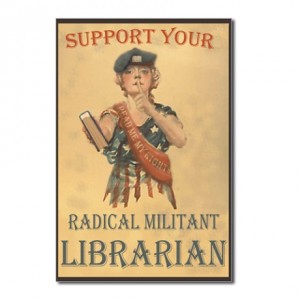 Thursday and Friday I attended a retreat in southern Illinois, and one of the presenters discussed how librarians are stereotyped as mousy individuals. We must use our voices to speak up and tell everyone what we do and what we mean to our library users.
Thursday and Friday I attended a retreat in southern Illinois, and one of the presenters discussed how librarians are stereotyped as mousy individuals. We must use our voices to speak up and tell everyone what we do and what we mean to our library users.
I would like to form a library committee in my library of faculty members, students, and staff that support the library. We always get complaints about resources we do not have, but no one understands if they do not speak up for us administration will ignore the library.
Speaking up and speaking out will ensure our survival! The retreat I attended was full of library directors and library administrators that do not have a library science degree. Many of them were IT professionals. The individuals making the decisions about access to resources have a different philosophy than a trained librarian.
Information technology and information science are different in my opinion. Information technologist are focused on running and maintaining software and hardware. Information scientists want users to be able to access information regardless of computer machinery, firewalls, computer crashes, etc. They are less concerned with the software and hardware.
What is the future of the library in the hands of a information technologist?
I think it is important for librarians to become familiar with computer software, hardware, and web-based tools in order to show there relevance in the ever evolving library. It is assumed that to maintain electronic databases, integrated library systems, library websites, and computer systems in the library you must be a information technologist.
Why not hire an information science professional with the same skills of a information technologist?
Of course, information science professionals must be willing to do things that are not part of the traditional librarian’s duties. As an academic librarian we often refuse to step from behind research, and do more practical and technical tasks. This is a detriment to the academic librarian. As the library moves into a virtual environment, and computer hardware is essential for library use we must be willing to have dual roles as information scientist and information technologist. Not only will we need to know how to search an electronic database for a scholarly journal, we must possess the skills to fix the hardware of the computer that is displaying that electronic database in the library. This dual role will ensure the librarians place at the table where decisions are made about the future of our libraries.
Image credit: blogs.scientificamerican.com, rikowski.wordpress.com

